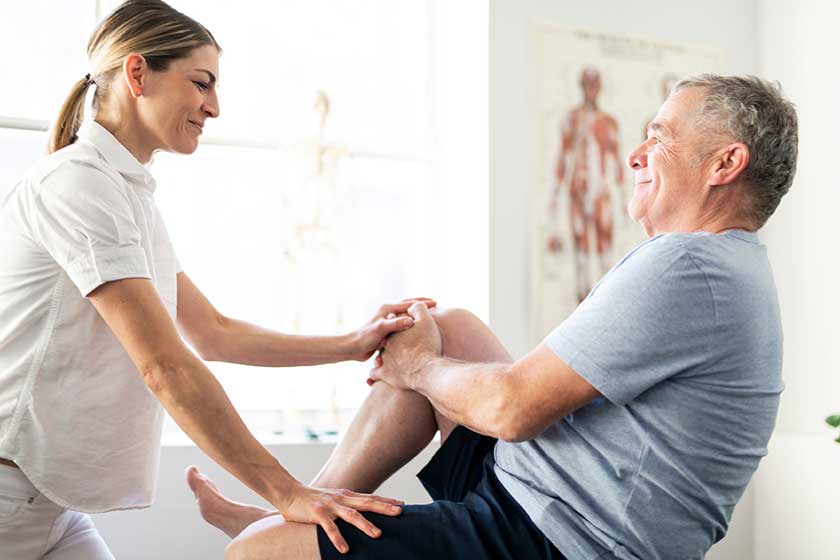Knee pain and joint injuries can occur in anyone. Though knee pain in elderly adults may arise from an injury, it’s also very common for other reasons. As the body ages, it simply begins to break down and so joints, muscles, bones, etc. diminish in health and vitality.
Is there anything that can be done to ward off knee pain in our loved ones and manage it if it already exists?
Osteoarthritis
Frequently caused by aging joints, injury, or obesity, osteoarthritis occurs when joints get damaged or degenerate as a result of wear and tear. Symptoms and signs include the following:
- In severe cases, joint effusion
- Muscle spasms
- During movement of the affected joint, a crackling noise
- Joint immobility
- Joint stiffness
Treatments include the following:
- If the person is overweight, weight loss will help
- Occupational and physical therapy
- Cold and hot packs intermittently
- Water-based and land-based exercises
- Medications
- Supportive devices
- Injection therapies
Meniscus Tear
A tear or laceration of the meniscus is diagnosed here. Your knee joint has cartilage which is referred to as “meniscus”. There is a medial and an inner meniscus involved in the knee. Symptoms and signs include the following:
- During knee movement, a clicking or popping sound can be heard
- Limited knee movement ability
- Knee pain
- Knee swelling
Surgery may be required depending on the meniscus tear severity. Routinely, x-rays and MRIs are used to diagnose a torn meniscus.
Bursitis
When the bursae become inflamed, it is referred to as bursitis. Bursae are responsible for your joints’ smooth movement ability. Any affected parts will experience pain with movement if they are inflamed. Symptoms and signs include the following:
- When moving the joint in question, stinging pain during and following movement
- Local joint pain
- Joint stiffness
Treatments include the following:
- Physiotherapy
- Reduce pain through medications
- Reduce inflammation through medications
- Elevation
Surgical intervention may be required for complicated bursitis.
Patellofemoral Pain Syndrome or Chondromalacia Patellae
Accompanied by cartilage softening, this condition refers to under-the-kneecap inflammation. Symptoms and signs can include the following:
- Stress or strain on the knee courtesy of a history of considerable physical activity
- Front of the knee pain
- Pain on your knee’s inner side
Treatments consist of the following:
- Rest, ice, compression, elevation
- To lessen inflammation, certain medications can be used
- Physiotherapy
Tendinitis
The condition refers to tendon inflammation or irritation. Attaching bones to muscles, these fibrous ropelike structures are spread throughout your body. For those affected, it can be extremely painful when trying to move, walk, etc.
Treatments consist of the following:
- Physical therapy
- Pain medications
We Can Help Your Loved One Be Healthier at Spring Mill
With Spring Mills’ Dimensions Health and Fitness Program, your loved one stands a better chance of being physically fit while they age. In addition to structured exercises, residents are encouraged to participate in dances and celebratory activities. To top it all off, three delicious, healthy meals a day are served. This assists your loved ones to eat healthier, thereby supplying them with the vitamins, minerals, and other nutrients they need for a healthy body and joints.
Contact us if you have any questions or, better yet, schedule a tour.







